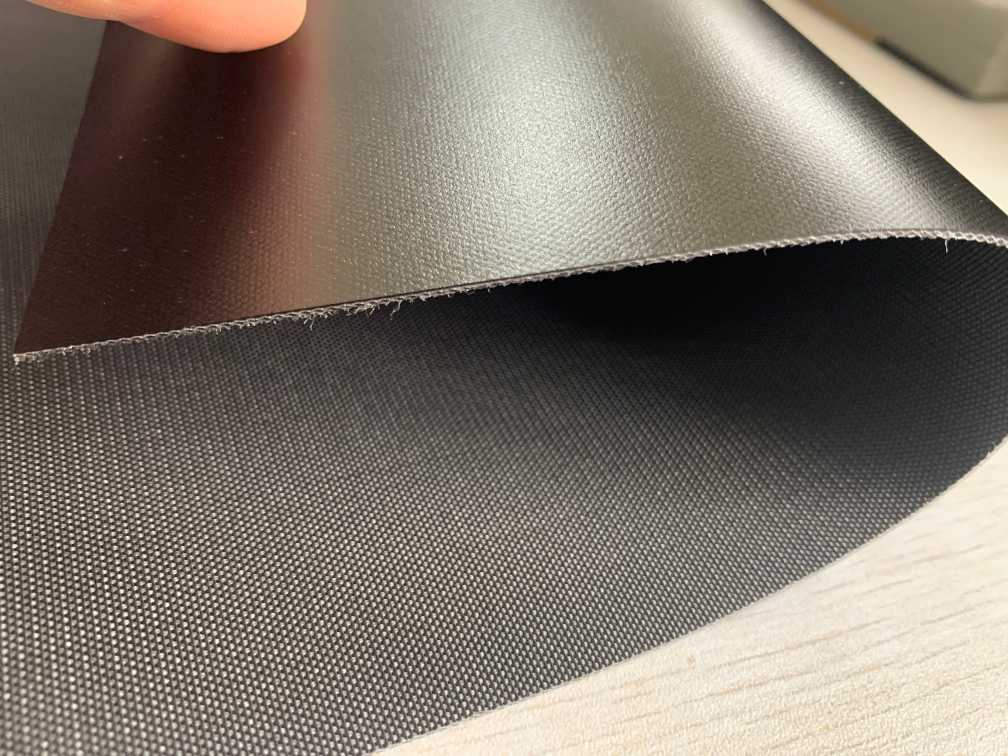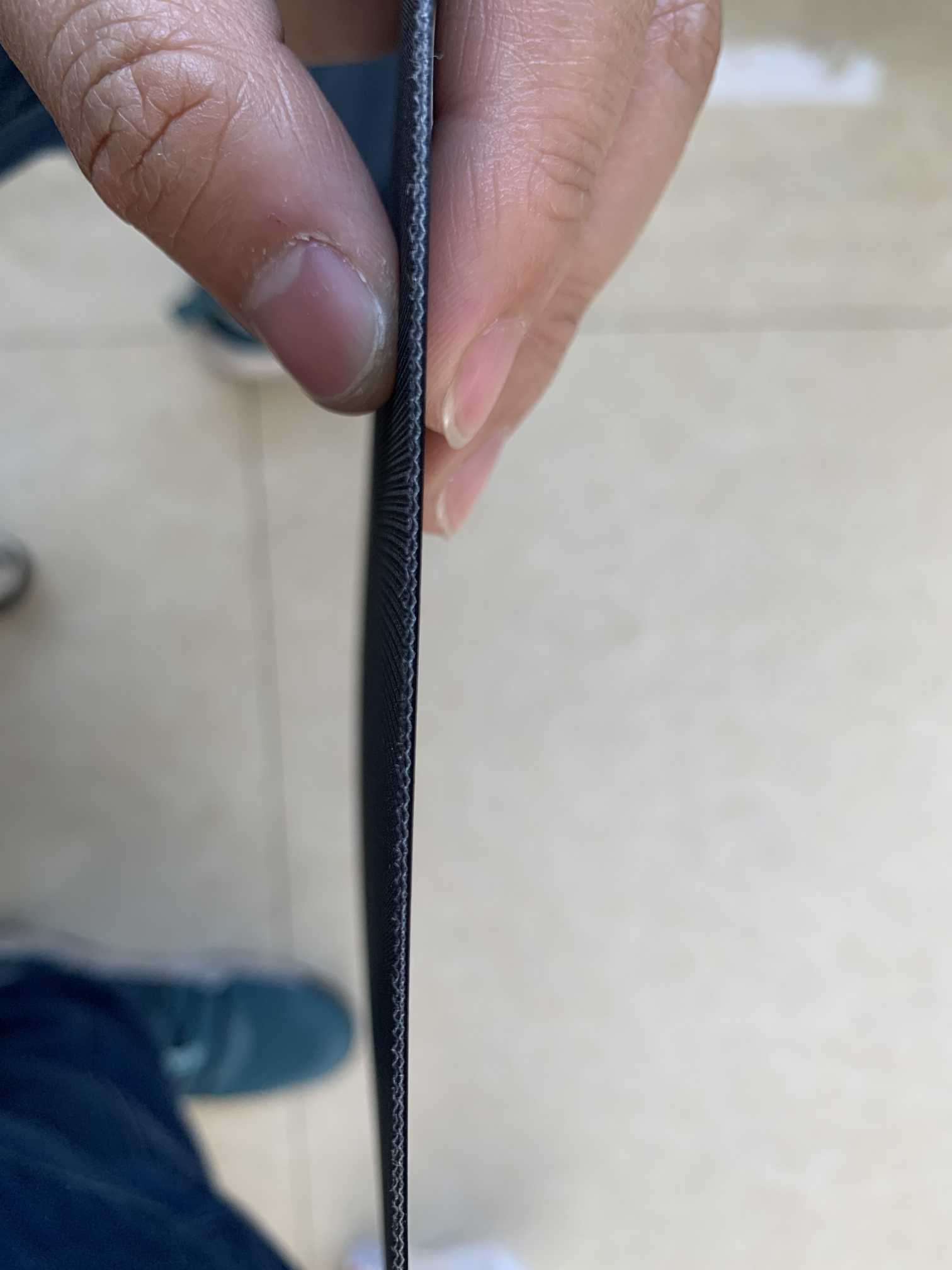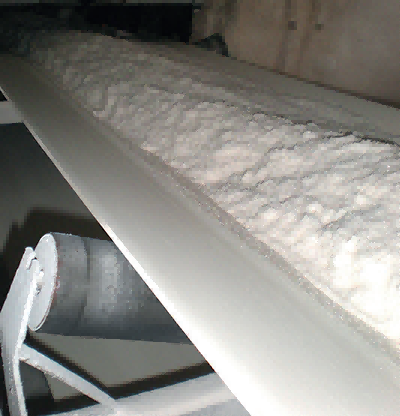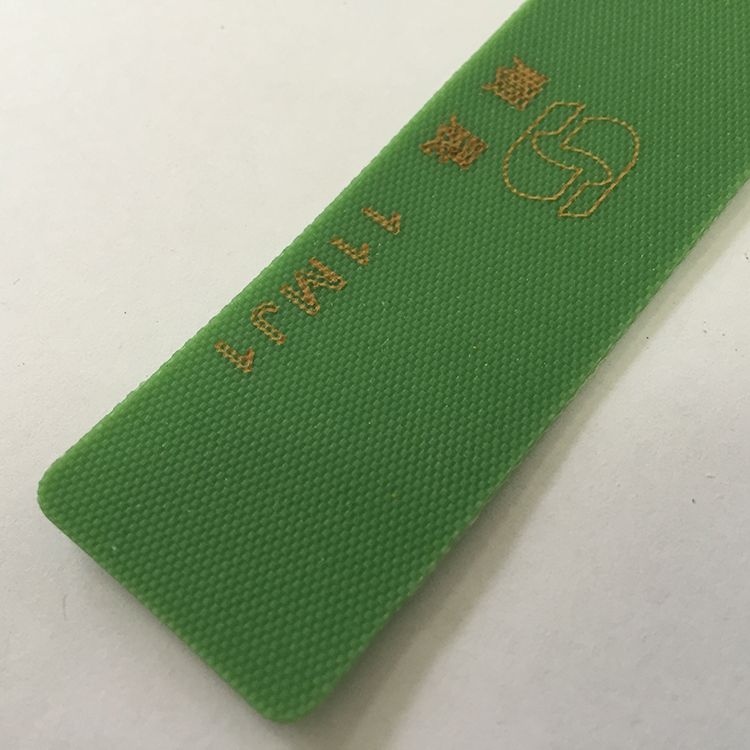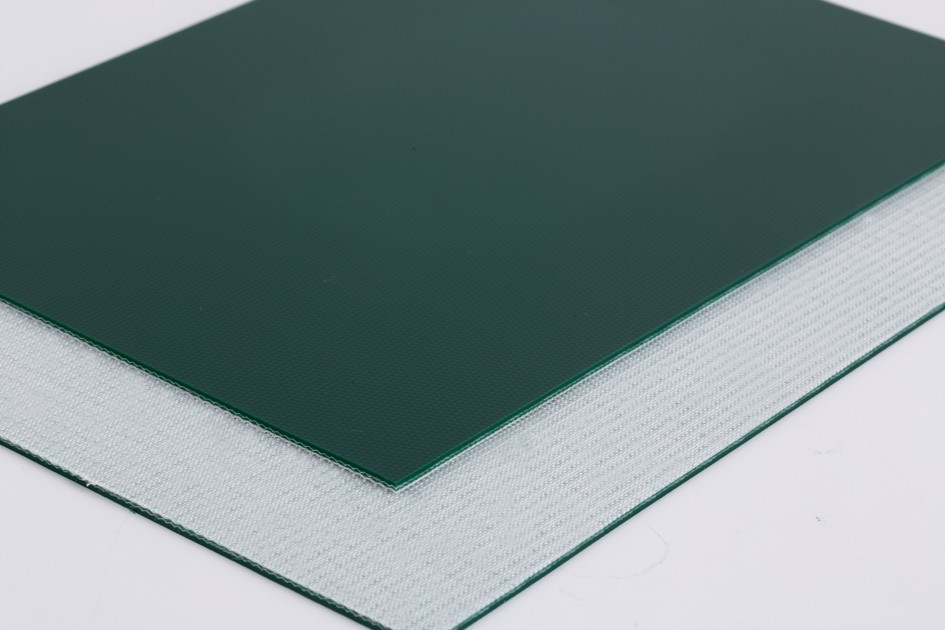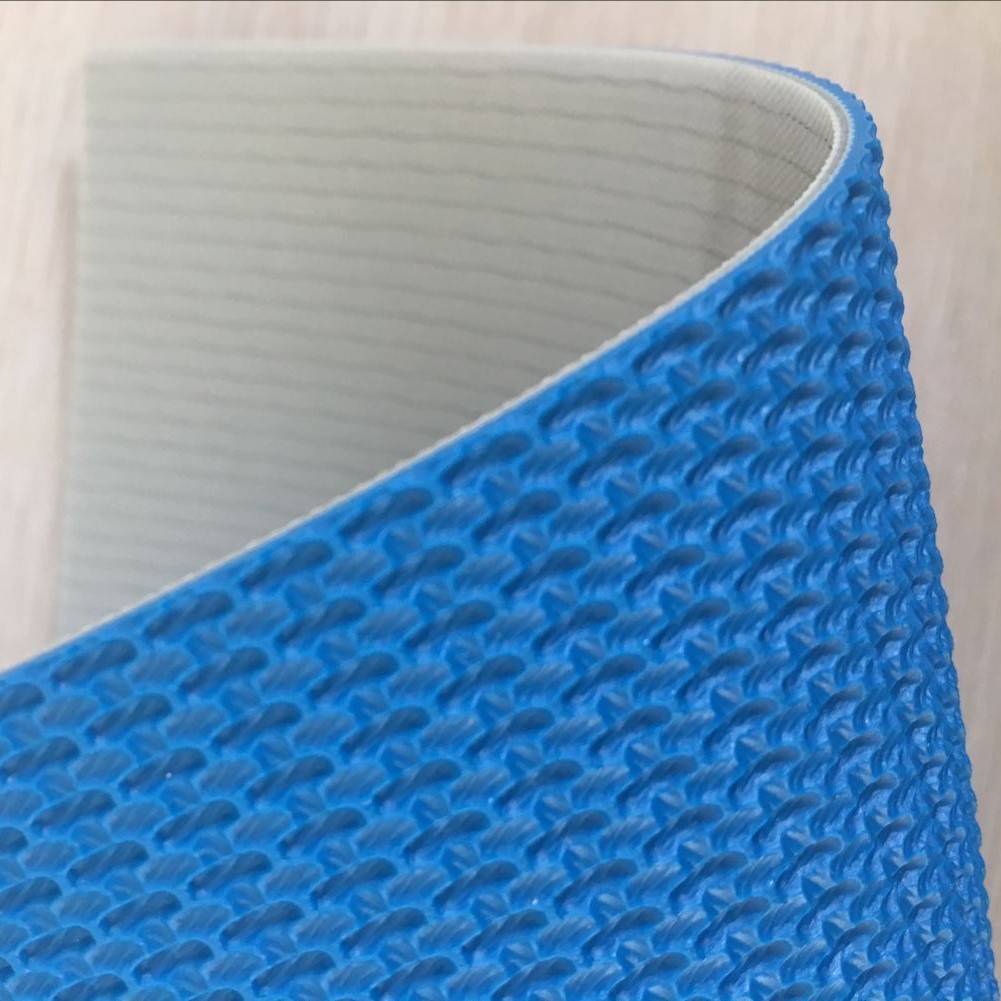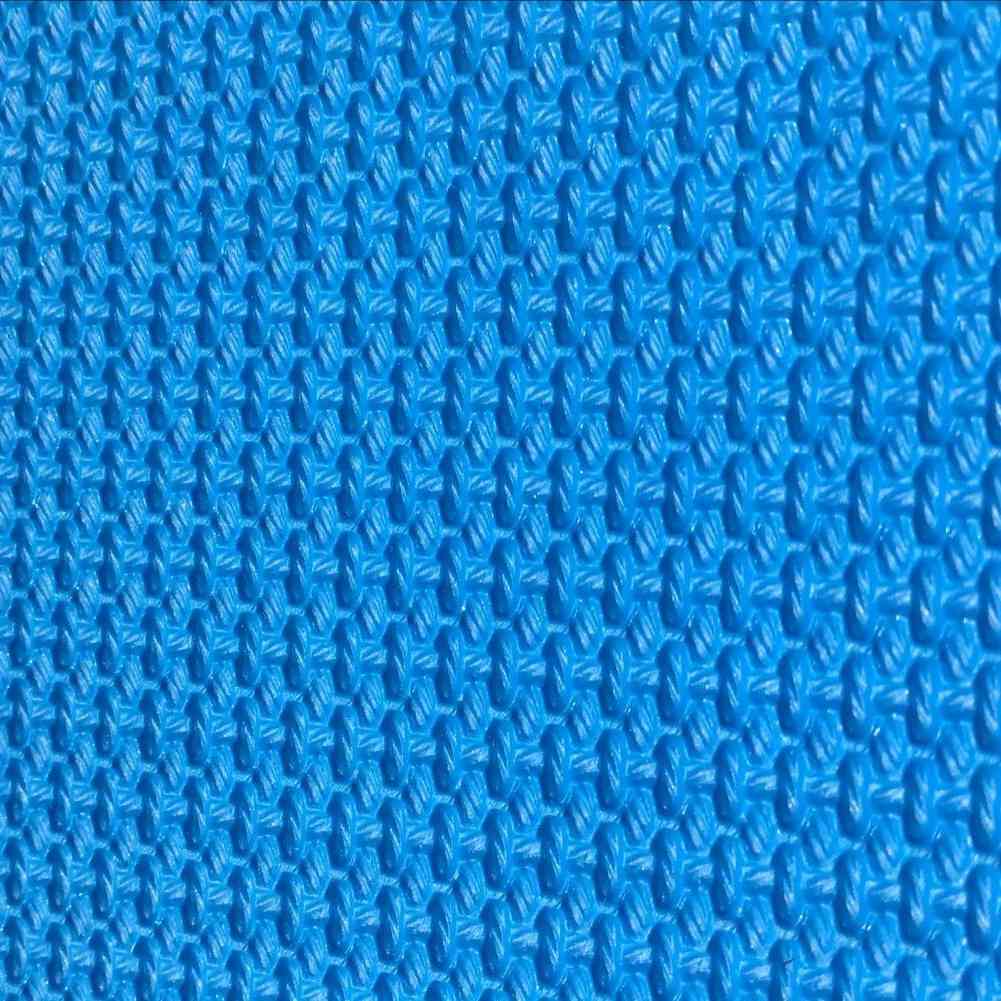Product introduction:
The carbon chain conveyor belt Anti-static 10^4 is a conveyor belt specially designed for application scenarios such as cross paving machines and non-textile process machines. The product is made of high-quality carbon chain materials and has anti-static properties, which can effectively protect transported items and prevent static damage to items.
Product features:
Anti-static performance: The anti-static performance of the carbon chain conveyor belt 10^4 has good anti-static properties and can effectively prevent damage caused by static electricity to transported goods.
Wear resistance: The product is made of high-quality carbon chain materials, has good wear resistance, can withstand high frequency use, and has a long service life.
High temperature resistance: The anti-static carbon chain conveyor belt 10^4 can withstand use in high temperature environments and is not easy to deform, melt, etc.
Lightweight and portable: The product is lightweight, soft, easy to carry, store and install, and convenient to use.
Application scenarios:
Anti-static carbon chain conveyor belt 10^4 is suitable for scenarios such as cross-netting machines and non-textile process machines. It can be used to transport all kinds of electronic products, semiconductor devices, precision instruments, etc., to effectively protect items from static damage.
Suggestions for use:
Anti-static carbon chain conveyor belt 10^4 should be stored in a dry, ventilated environment away from direct sunlight, and avoid prolonged exposure to humidity.
Before use, check whether the surface of the conveyor belt is flat, without obvious wear and damage, to ensure the antistatic performance and service life of the conveyor belt.
Care should be taken to avoid excessive stretching, bending, friction, etc. of the conveyor belt during use to protect the service life and antistatic performance of the conveyor belt.
The anti-static carbon chain conveyor belt 10^4 is not recommended for use in the food processing industry. Although the product has antistatic properties, factors such as safety and hygiene in contact with food need to be taken into account in the food processing industry’s usage environment.
First, the anti-static 10^4 material of the carbon chain conveyor belt may pollute food. In food processing, conveyor belts that meet hygiene standards are required to ensure the hygienic quality of food. However, the anti-static carbon chain conveyor belt 10^4 is not specially designed for the food processing industry; its materials may pollute food, thereby affecting the hygiene quality of food.
Second, the anti-static carbon chain conveyor belt 10^4 may have an impact on the quality and taste of food. In the food processing process, the conveyor belt used must have good wear resistance, high temperature resistance, etc., without affecting the quality and taste of the food. However, the anti-static carbon chain conveyor belt 10^4 is not specifically designed for the food processing industry; it may affect the quality and taste of food.
In which industries is the anti-static carbon chain conveyor belt 10^4 suitable?
Electronics industry: Anti-static carbon chain conveyor belts 10^4 can be used to transport electrostatically sensitive items such as electronic components, semiconductor chips, liquid crystal displays, etc., to protect these items from static damage.
Medical industry: In fields such as medical equipment manufacturing and pharmaceutical production, static-sensitive items need to be transported. The anti-static carbon chain conveyor belt 10^4 can effectively protect these items from static damage.
Automobile manufacturing: Anti-static carbon chain conveyor belts 10^4 can be used to transport electrostatically sensitive automotive parts in the automobile manufacturing industry, such as electronic controllers, sensors, instruments, etc.
Textile industry: Anti-static carbon chain conveyor belts 10^4 can also be used for textile transportation in the textile industry, especially when it is necessary to prevent damage to textiles caused by static electricity.

